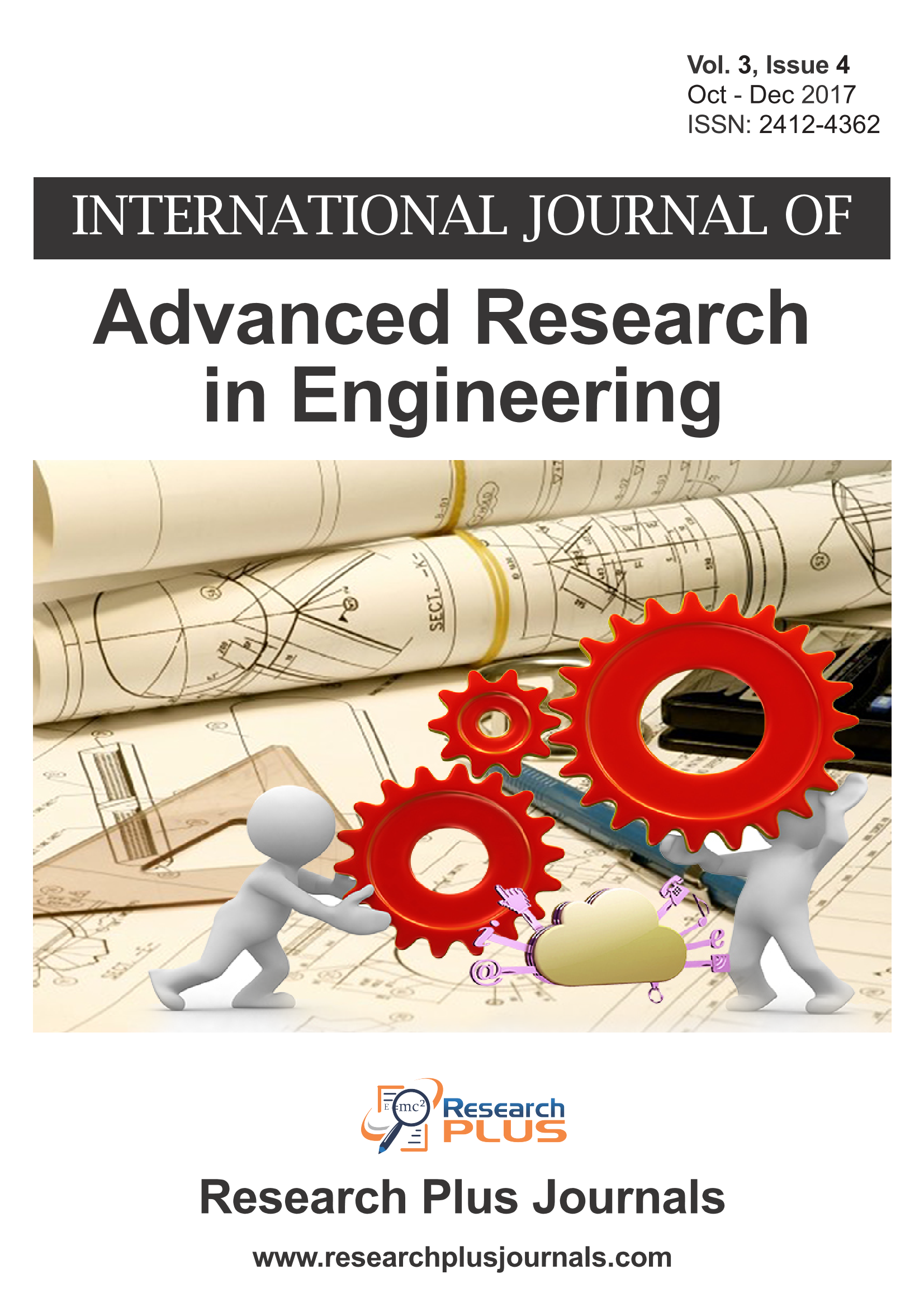Experimental Investigation into Influence of Lathe Cutting Parameters on Surface Roughness for Ferrous and Non- Ferrous Alloys
Abstract
Optimization of lathe cutting parameters is very important as they form the best suitable conditions for the machining operations. For the efficient use of a CNC Lathe, a set of optimum cutting parameters (speed, feed and depth of cut) is an essential requirement. Surface Roughness, which heavily depends on these cutting parameters, is one of the most frequently used standards to define the quality of turned components. In this work, a correlative study of cutting parameters and the surface roughness for ferrous (stainless steel 304) and non–ferrous alloy (aluminum) material is carried out and presented. Response Surface Methodology (RSM) and Analysis of Variance (ANOVA) techniques are employed to investigate the influence of cutting parameters on surface roughness values. Results from contour plots are obtained to investigate the patterns of factors and the responses. The combination of optimum experimental parameters can be found by machining these ferrous and non-ferrous materials in CNC turning center and finding the least surface roughness parameters. ANOVA analysis, integrated with Design Expert© software, is used to determine effective ratios of the parameters and subsequently the relationships between input parameters and their responses relationship are established. The minimum surface roughness results in reference to spindle rpm, feed rate, and depth of cut are determined and estimation of the optimal surface roughness values (Ra) for least surface roughness are the results obtained in the study. This study presents the findings of an experimental investigation into the effect of turning parameters like cutting speed. Feed rate and depth of cut by turning ferrous (stainless steel 304) and non-ferrous material (Aluminium) in the CNC turning center and then checked the surface roughness values with Mitutoyo SJ-301 instrument. The effects of parameters and their correlation with the surface roughness and the optimal values have been analysed. These results establish a firm relationship and correlation between cutting parameters and surface roughness and in doing so, results also achieve an optimal set of machining parameters for select ferrous and non-ferrous materials.

This work is licensed under a Creative Commons Attribution-ShareAlike 4.0 International License.
Copyright & License
All Research Plus Journals (RPJ) publish open access articles under the terms of the Creative Commons Attribution (CC BY-SA 4.0) https://creativecommons.org/licenses/by-sa/4.0/ License which permits use, distribution and reproduction in any medium, provided the original work is properly cited & ShareAlike terms followed.
Copyright on any research article in a journal published by a RPJ is retained by the author(s). Authors grant RPJ a license to publish the article and identify itself as the original publisher. Upon author(s) by giving permission to RPJ either via RPJ journal portal or other channel to publish their research work in RPJ agrees to all the terms and conditions of https://creativecommons.org/licenses/by-sa/4.0/ License and terms & condition set by RPJ.
3rd party copyright
It is the responsibility of author(s) to secure all necessary copyright permissions for the use of 3rd-party materials in their manuscript.
Disclaimer
Research Plus Journals Open Access articles posted to repositories or websites are without warranty from RPJ of any kind, either express or implied, including, but not limited to, warranties of merchantability, fitness for a particular purpose, or non-infringement. To the fullest extent permitted by law RPJ disclaims all liability for any loss or damage arising out of, or in connection, with the use of or inability to use the content.
















